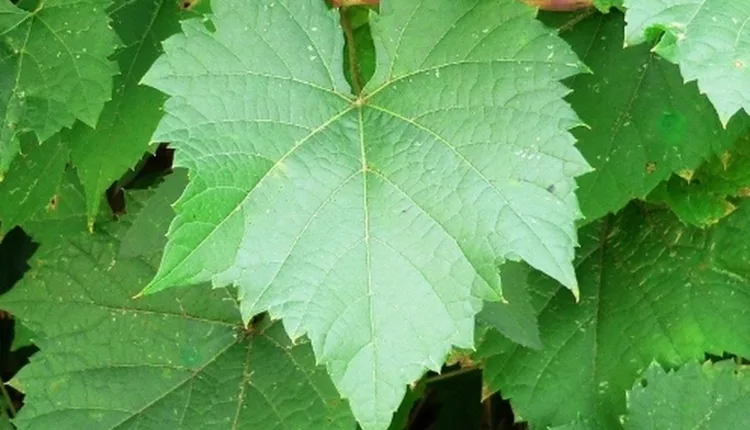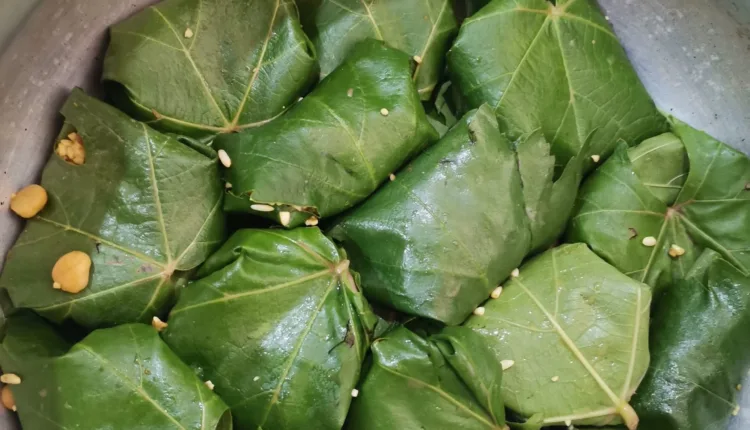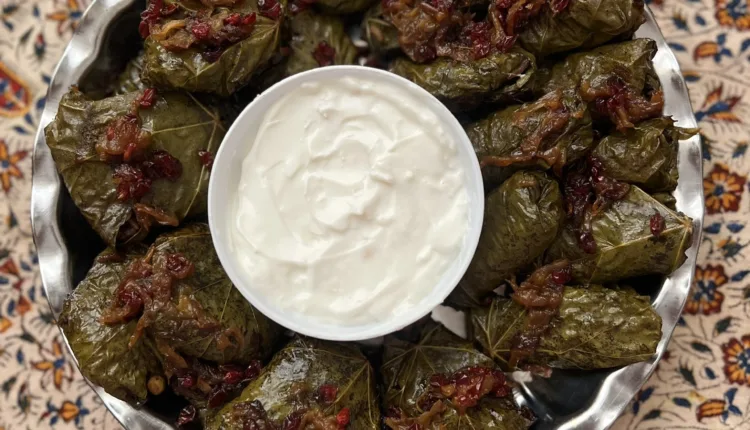Step into the World of Persian Dolmeh
Persian Dolmeh
Persian Dolmeh, or Dolmeh Barg-e Mo, is a captivating staple of Iranian culinary art, involves stuffing grape leaves with a robust blend of rice, herbs, and ground meat. This exquisite dish, celebrated for its complex flavors and textures, offers a fascinating glimpse into the gastronomic heritage of Persia. We invite you today to embrace the world of Middle Eastern cooking with our handcrafted Persian Dolmeh recipe.

Ingredients: Assembling the Components for Dolmeh
So, for the Filling:
- 1.5 lbs (700 g) ground beef or lamb
- 1 cup uncooked basmati rice
- 1 bunch fresh parsley, finely chopped
- 1 bunch fresh mint, finely chopped
- 1 large onion, finely chopped
- 2 cloves garlic, minced
- 1 teaspoon turmeric
- 1/2 teaspoon ground black pepper
- 1 teaspoon salt, or to taste
- 1 tablespoon lemon juice
And, for the Dolmeh:
- 1 jar grape leaves (about 60 leaves)
- 1 cup vegetable broth
- 2 tablespoons olive oil

Cooking Instructions: Mastering the Art of Persian Dolmeh
- Filling Preparation: In a large bowl, combine the ground meat, uncooked rice, chopped parsley, mint, onion, garlic, turmeric, black pepper, salt, and lemon juice. Mix until everything is thoroughly blended.
- Grape Leaves Preparation: Rinse the grape leaves under cold water and pat them dry. Blanch them in boiling water for a few seconds if they are overly large or tough.
- Crafting the Dolmeh: Lay a grape leaf flat, vein-side up. Place a portion of the filling near the stem end of the leaf. Fold in the sides and roll the leaf around the filling, tucking in the sides as you go, to create a neat package. Repeat with the remaining leaves and filling.
- Cooking the Dolmeh: Arrange the stuffed leaves seam-side down in a large pot. Pour the vegetable broth and olive oil over them. Cover and let simmer for about 45-60 minutes, until the rice and meat are thoroughly cooked, and the leaves are tender.
Persian Dolmeh: A Celebration of Iranian Gastronomy
“Dolmeh,” translating to “stuffed,” is a cherished delicacy across many Middle Eastern countries, with each region offering its unique rendition. Persian Dolmeh, with its intricate amalgamation of herbs, spices, and textures, holds a distinguished spot in the culinary traditions of Iran.
Serving Instructions: Presenting and Enjoying Persian Dolmeh
- Presentation: Dolmeh is best served warm or at room temperature. The vibrant green of the grape leaves creates a striking visual appeal.
- Garnish: Enhance the flavor by drizzling a bit of olive oil or a squeeze of fresh lemon juice over the Dolmeh.
- Serve: Distribute a few Dolmehs onto each plate, ideally accompanied by a side of yogurt or a fresh cucumber and tomato salad.
- Savor: Relish in the multi-layered flavors that Persian Dolmeh offers—a delectable journey through the heart of Persian cuisine.
We hope this Persian Dolmeh recipe adds an enchanting Middle Eastern touch to your culinary collection. Enjoy preparing this captivating dish and sharing the wonders of Persian cuisine with your loved ones. Happy cooking!
Check out our recipes section here!
Is it Dolmeh or Dolma?
Also, “Dolma” and “Dolmeh” essentially refer to the same kind of dish—stuffed vegetables or leaves—and are used interchangeably in many contexts. The difference lies in the linguistic roots.
“Dolma” is the term most commonly used in Turkish and some other Middle Eastern cuisines. It comes from the Turkish verb “dolmak,” which means “to be filled” or “to be stuffed.”
“Dolmeh,” on the other hand, is the term used in Persian (Iranian) cuisine. It is a variant of “dolma,” adapted to fit the phonetics of the Persian language.
Moreover, Both terms describe a family of stuffed dishes that can include grape leaves, bell peppers, eggplants, zucchinis, onions, or tomatoes filled with a mixture of rice, ground meat, and spices.
So, in the context of Iranian cuisine, it would be more accurate to use “Dolmeh,” but “Dolma” is also recognized and widely used in English-speaking countries when referring to this type of dish.


